This is the fourth post in a series of tests of the Fujifilm 32-64 mm f/4 lens on the Fuji GFX 50S. The test starts here.
The data in the previous post can be reworked to show focus shift as the lens is stopped down:
At 64 mm, the focus shift is moderately low. Except when shooting wide open, this lens is best focused at f/5.6. That’s also the sharpest stop, and it is amazingly sharp for a zoom.
Let’s compare that to the Fuji 63 mm lens:
At f/4 the prime is sharper, but it’s much closer at the other two stops that are in common between these two graphs. This is a really impressive performance by this zoom.
F/4 is the sharpest stop at 44 mm, and if yu use that for focusing, you’ll be in good shape as you stop down.
F/4 is also the sharpest stop at 32mm. You’ll probably want to focus at f/5.6 if you stop down from there.
We can crunch the data yet another way and look at the parfocality of the lens:
Given the limitations of video resolution, my thought is that this is a small enough shift that you could zoom while shooting. Of course, like all the results here, it’s not guaranteed to work that way at longer or shorter subject distances.
This is, by a country mile, the best zoom lens I’ve ever tested.
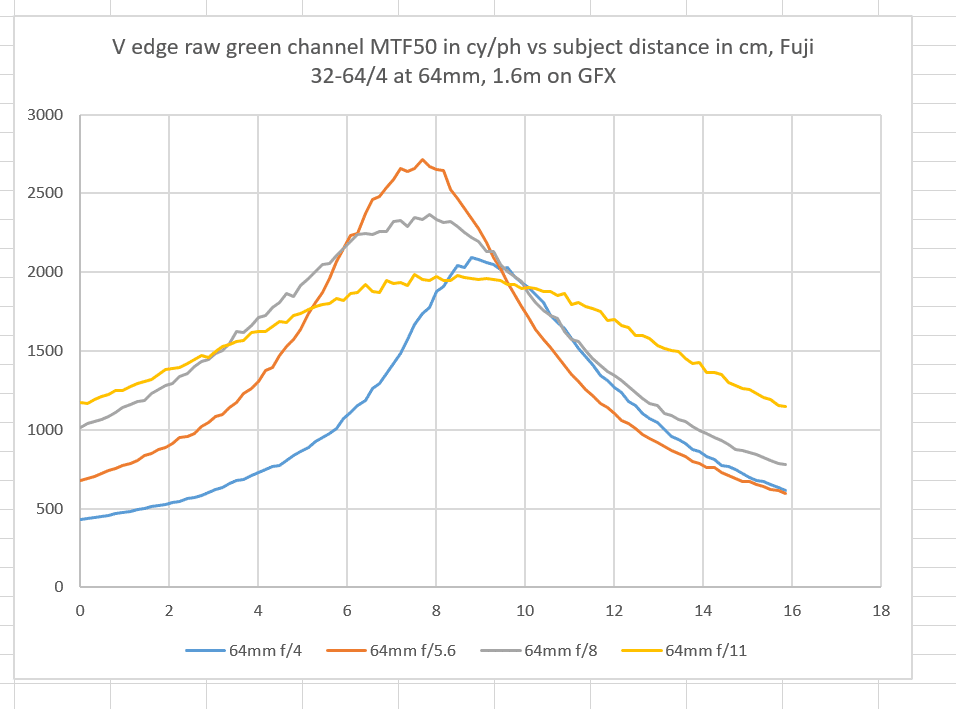
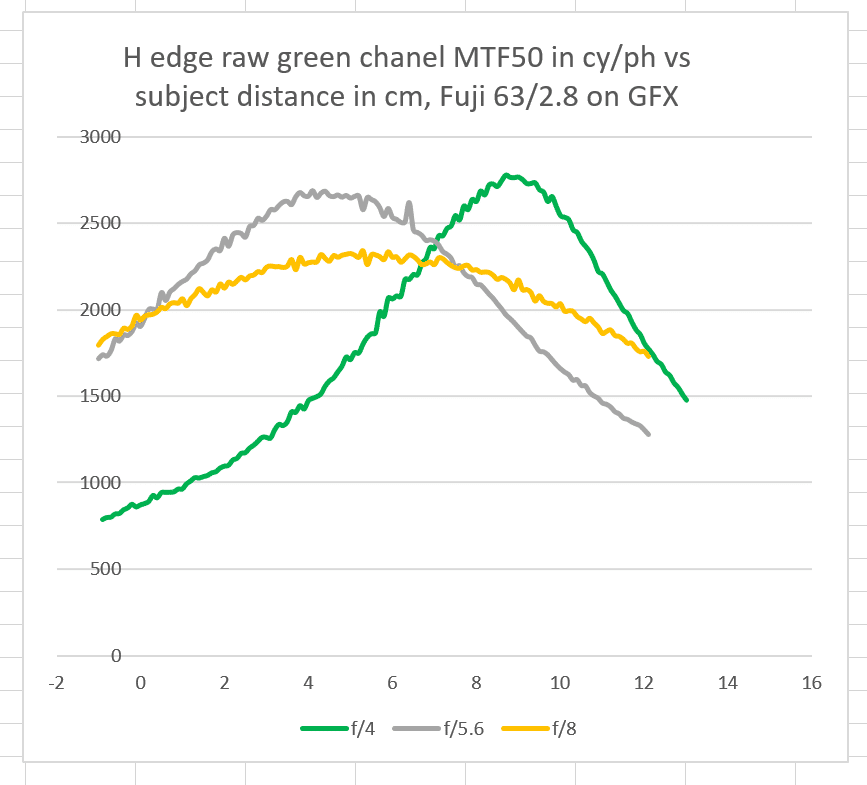
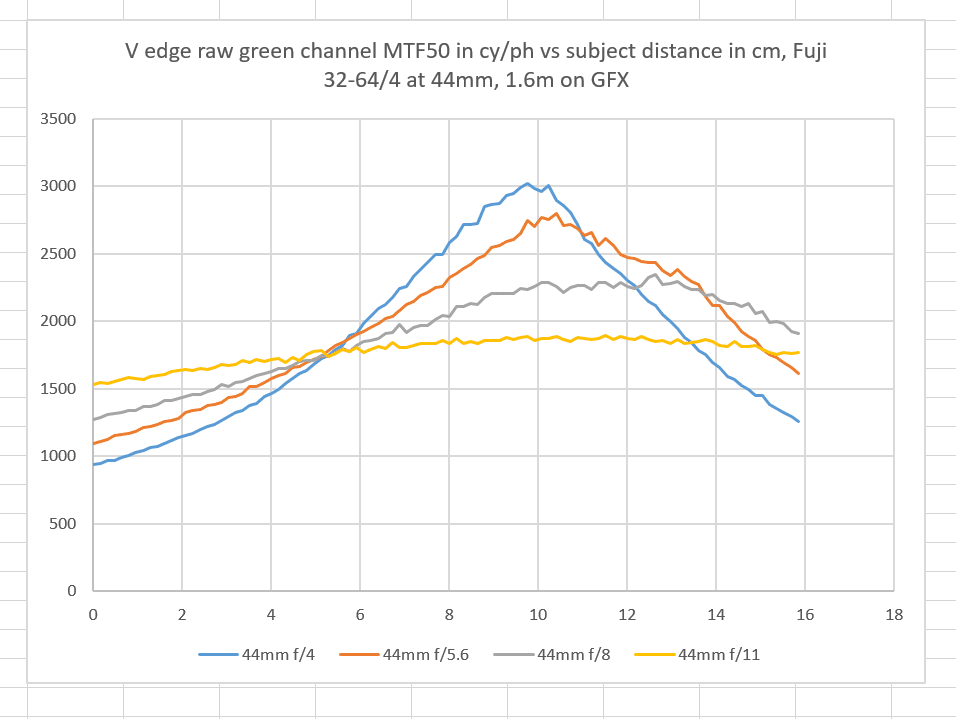
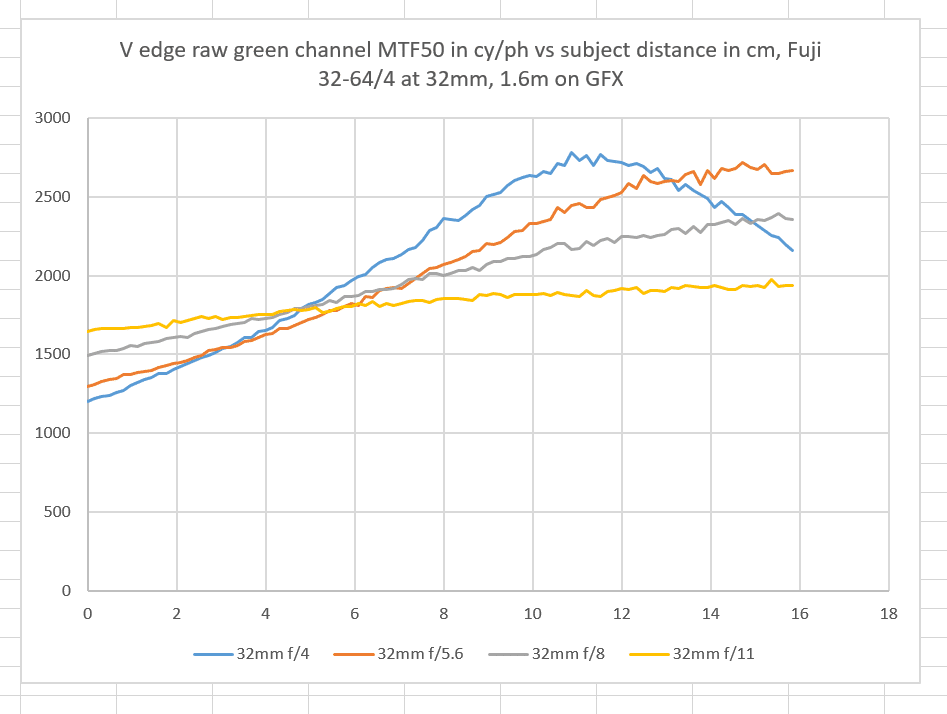
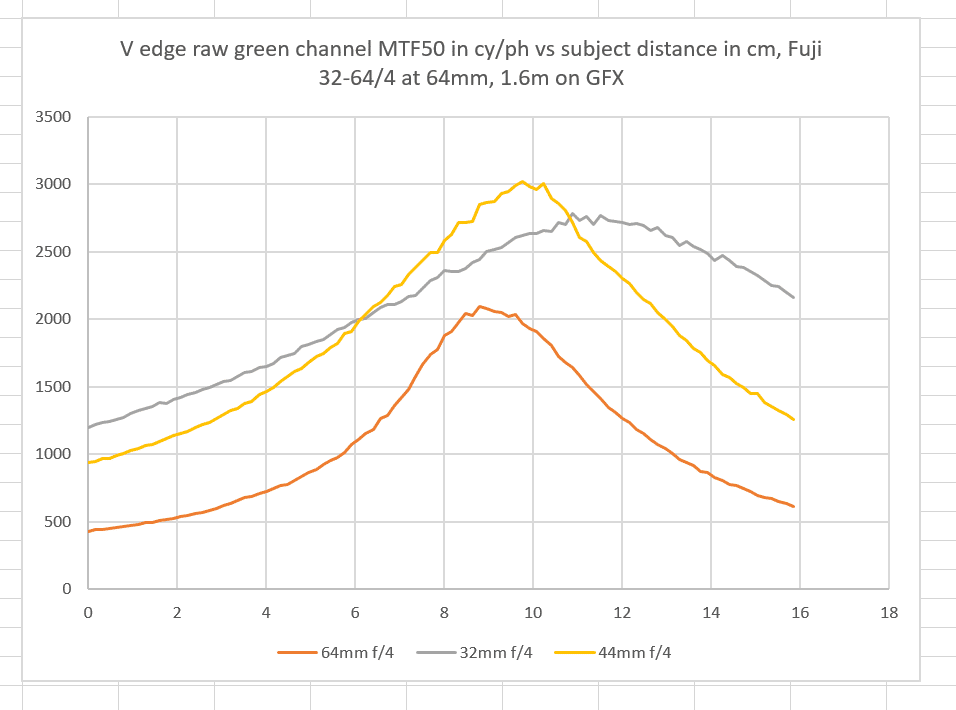
Great review Jim,
Thank you
Ed
Thanks, Edward. Any tests you’d like to see?
I would love too see 110 versus 120 at infinity and 1m distance.
Your tests are priceless
Thank you
Ed
For distant subjects, ompare this: http://blog.kasson.com/the-last-word/fuji-1102-on-gfx-otus-841-4-on-a7rii/
to this: http://blog.kasson.com/the-last-word/otus-85-on-the-a7rii-fuji-120mm-macro-on-the-gfx-50s/
Thank You Jim,
110 is my choice plus 32-64
Ed
Hey Jim, so with all the technical testing you’ve done on this camera, and the lenses, I’m wondering how you’re actually enjoying the camera? Would just love a non technical assessment on your feeling about the camera and shooting with it compared with your other cameras. Also, what essential lenses would you recommend for it after your testing. Thanks again.
In a nutshell, I like the camera a lot. It’s not much heavier than a FF DSLR rig. IQ is fabulous. Now that I’ve gotten used to the UI, I like that, too. As for how I use the camera, the only real project I’ve used it for is copy-stand work, so that’s hard to generalize. I hope to do more with it in a couple of months. As to lenses, the only one I’s say to skip might be the 63. You could also not get the 120 if you don’t do macro. So that would leave you with the 23, the 32-64, and the 110.
Thanks Jim. And what do you carry around with you when you travel?
Lately, the a9.